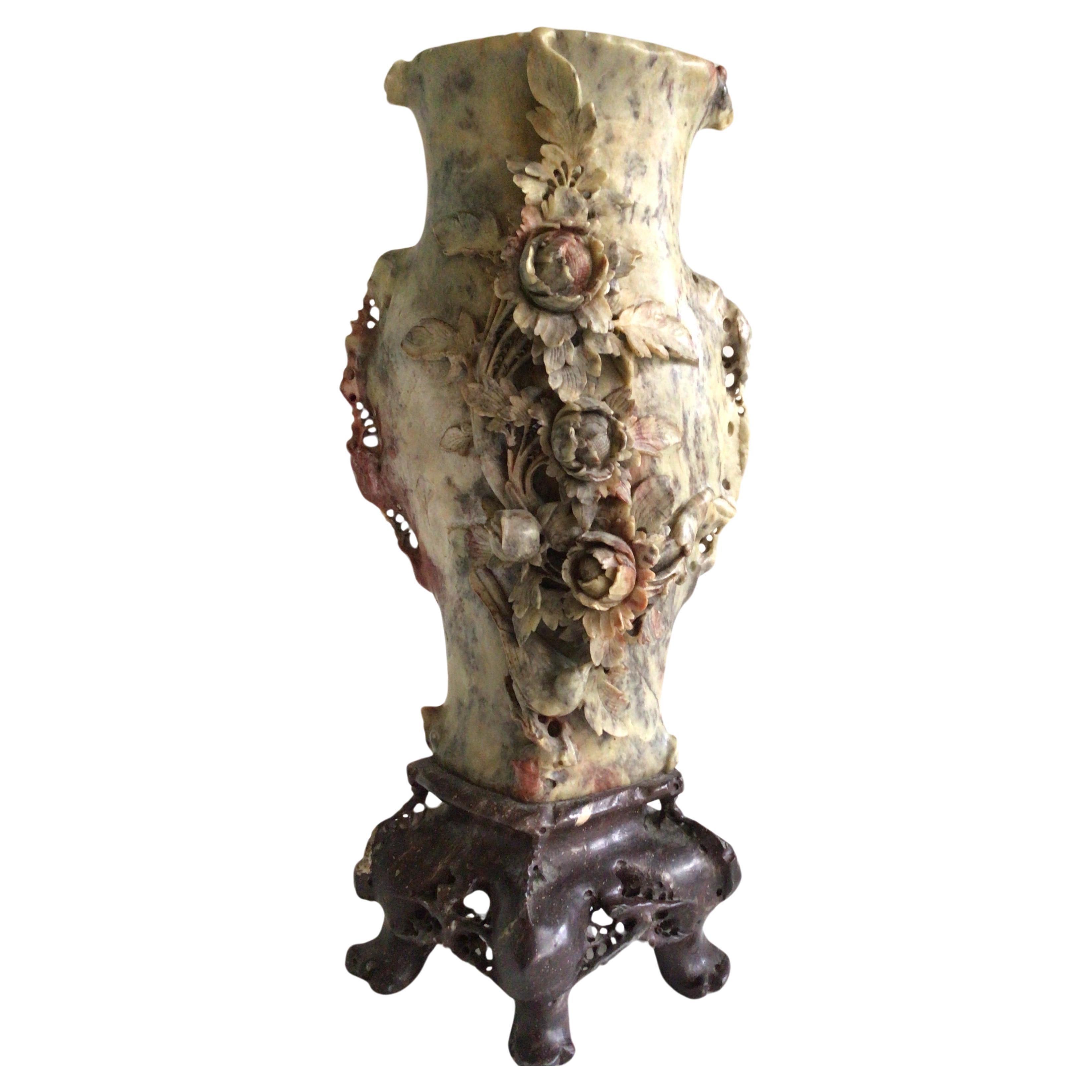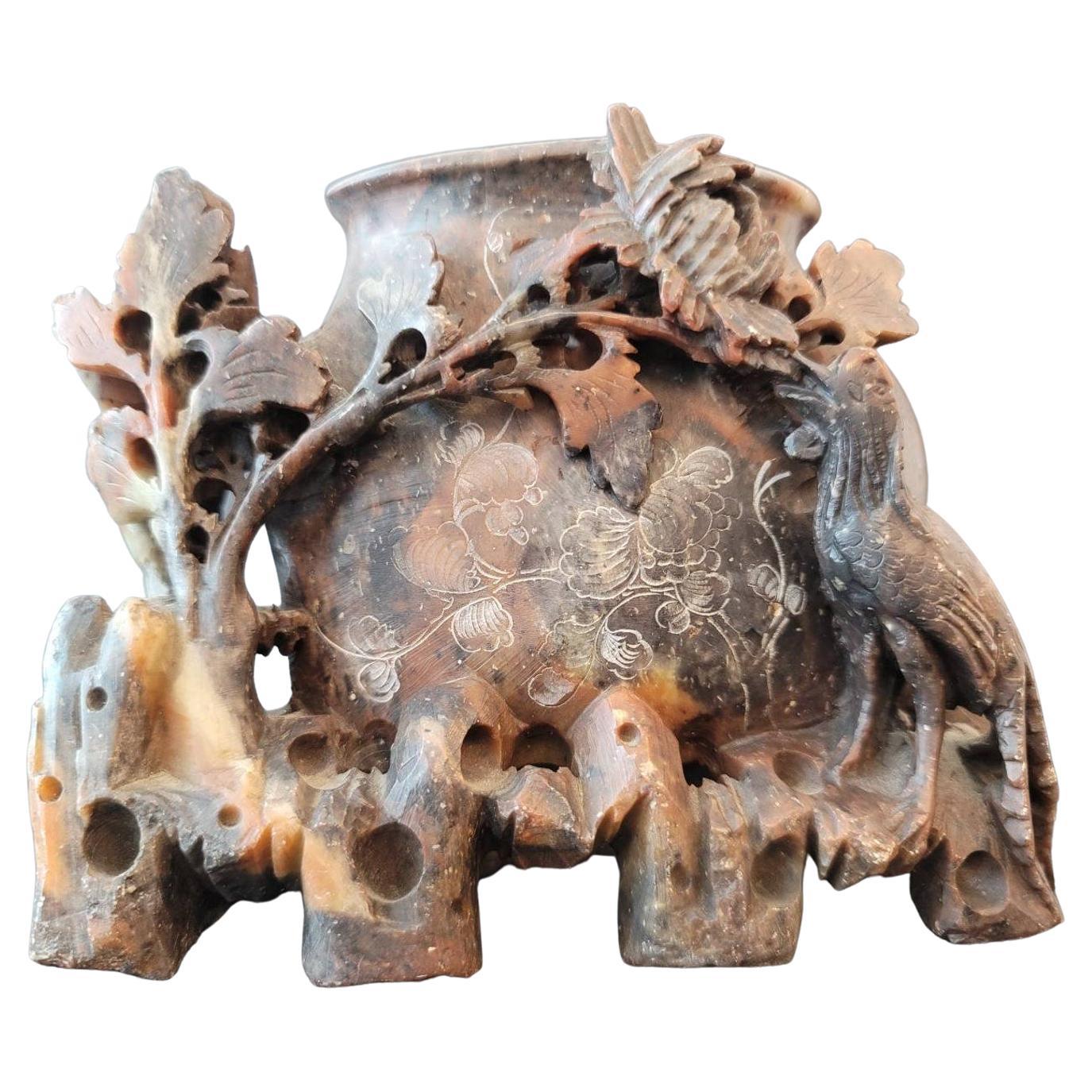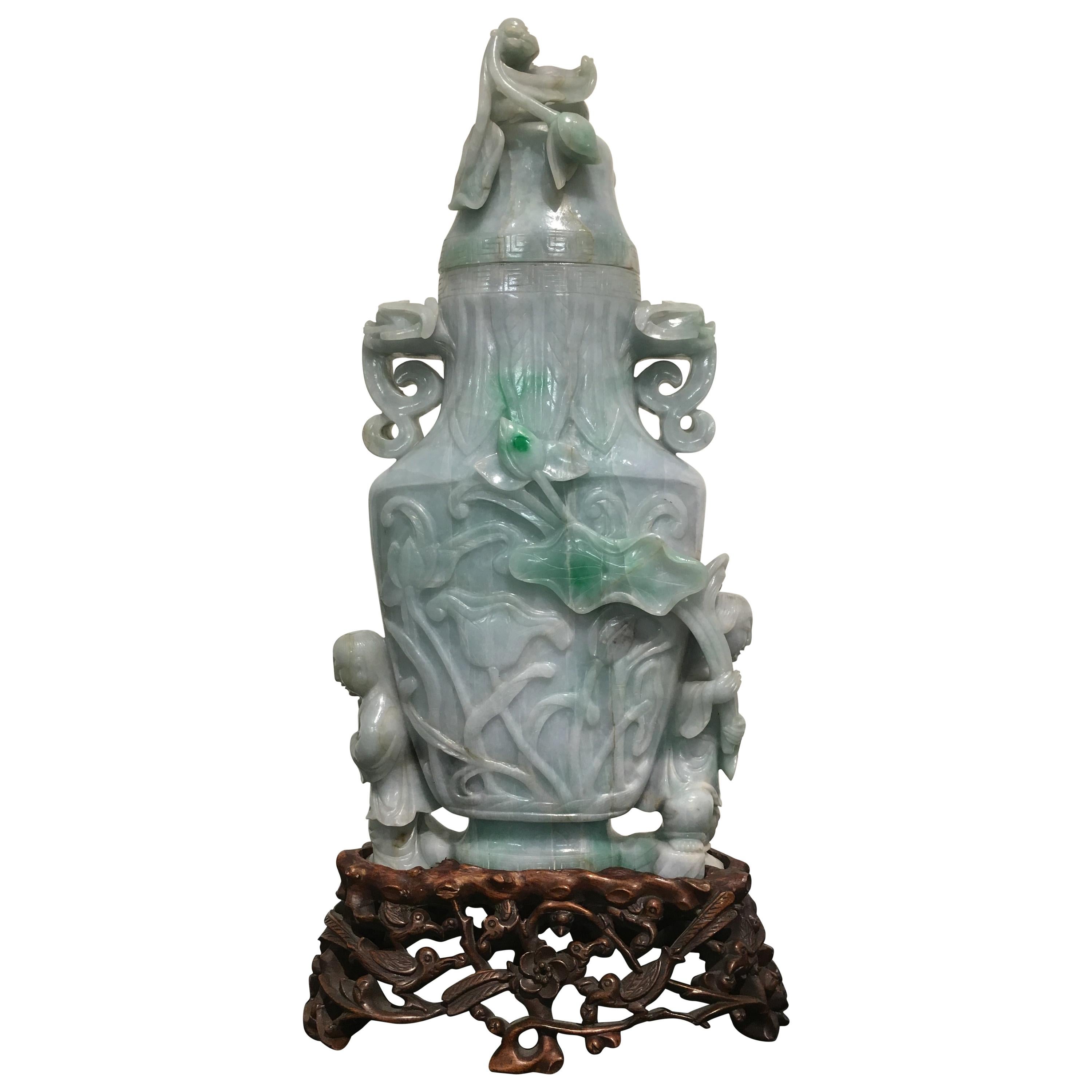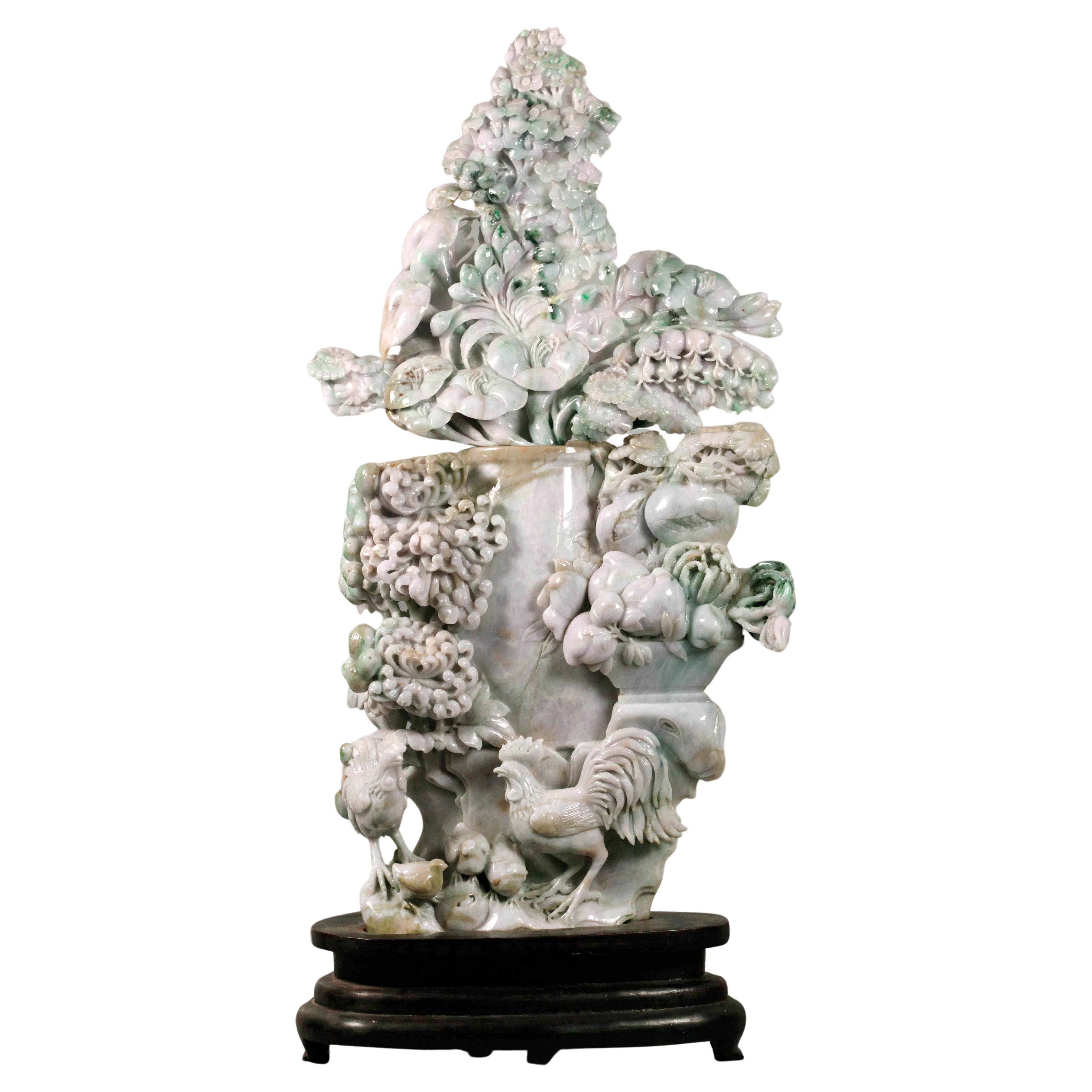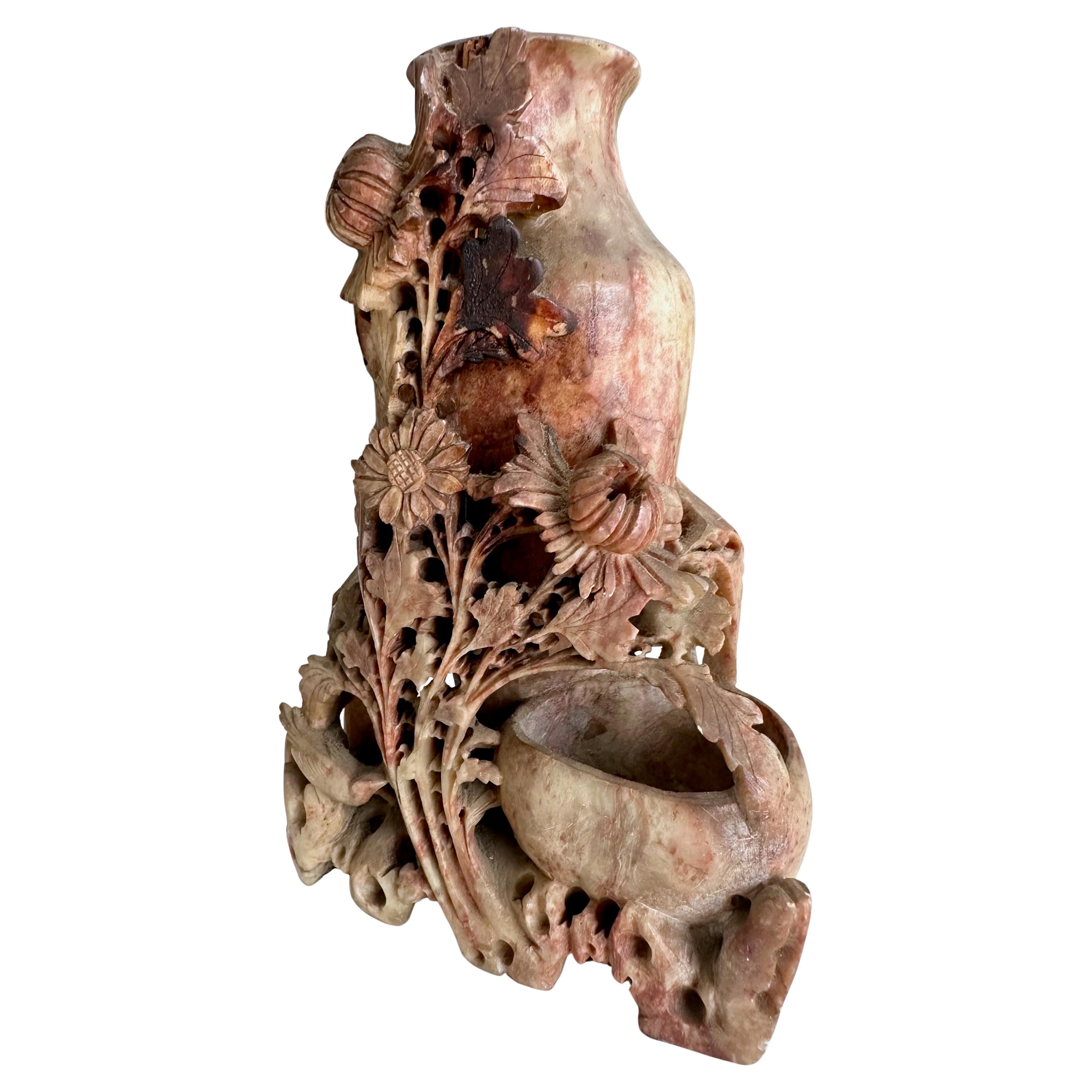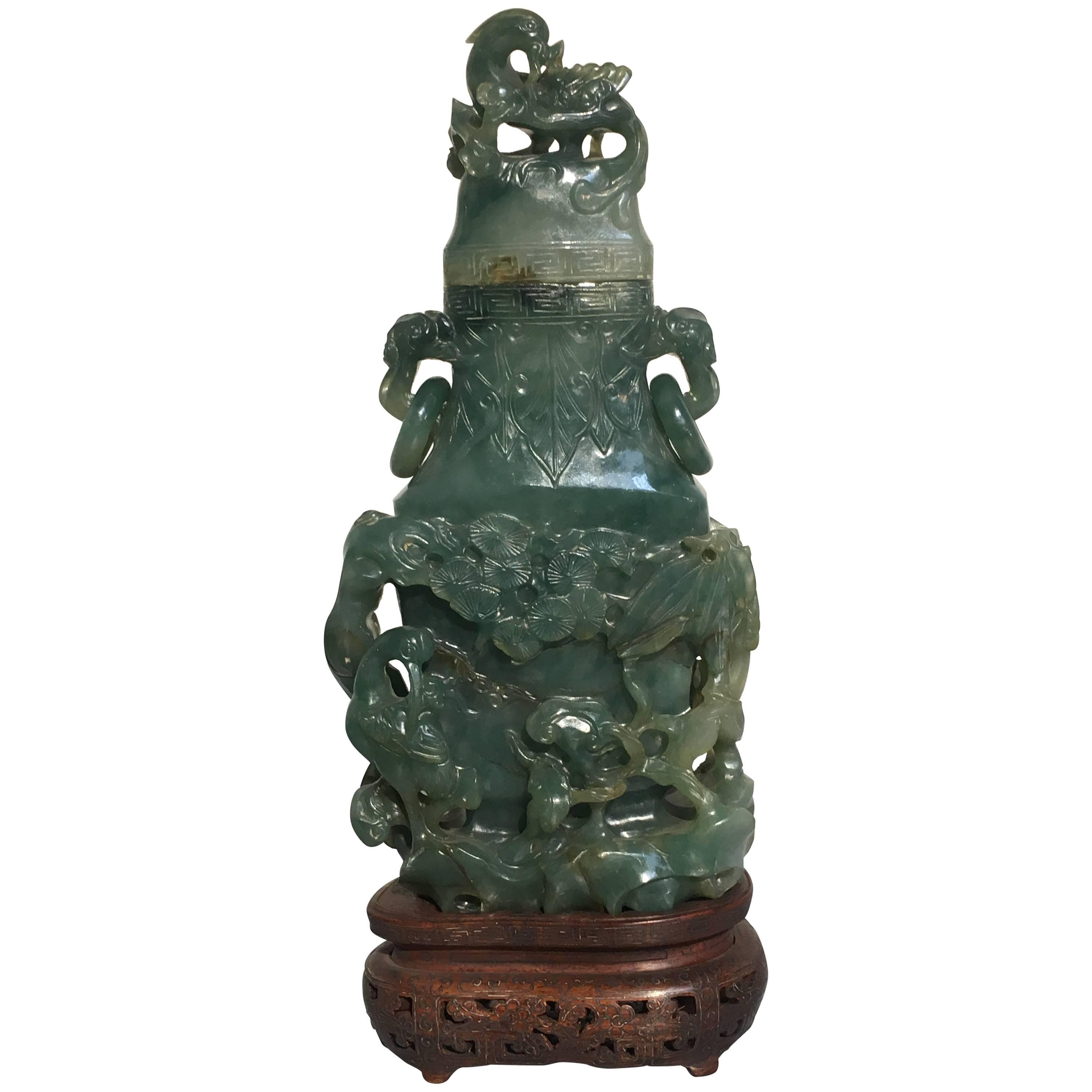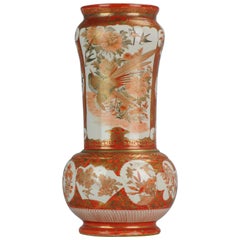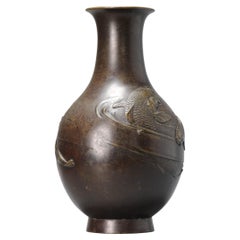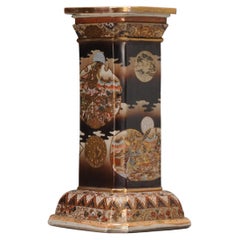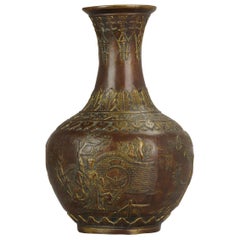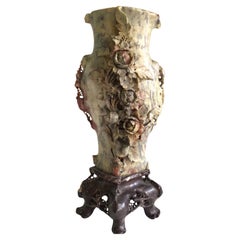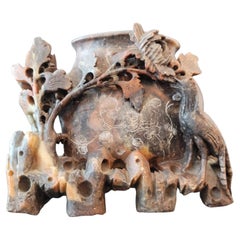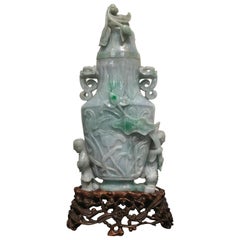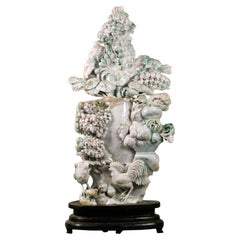Items Similar to Large Qing Dynasty Chinese Soapstone Statue Nicely Carved Flower Bird Vase
Want more images or videos?
Request additional images or videos from the seller
1 of 13
Large Qing Dynasty Chinese Soapstone Statue Nicely Carved Flower Bird Vase
$1,122.06
$1,496.0925% Off
£827.70
£1,103.5925% Off
€937.50
€1,25025% Off
CA$1,554.68
CA$2,072.9025% Off
A$1,688.08
A$2,250.7725% Off
CHF 893.96
CHF 1,191.9525% Off
MX$20,690.98
MX$27,587.9725% Off
NOK 11,063.10
NOK 14,750.8025% Off
SEK 10,454.05
SEK 13,938.7325% Off
DKK 7,137.06
DKK 9,516.0825% Off
About the Item
Lovely Chinese statue. The artist really did it's best on this one.
The pictures are a bit slanted, the piece itself is straight.
Overall condition, no damages found. Size: 260 x 160 x 70mm, height x diameter x depth.
- Dimensions:Height: 10.24 in (26 cm)Width: 6.3 in (16 cm)Depth: 2.76 in (7 cm)
- Materials and Techniques:
- Place of Origin:
- Period:
- Date of Manufacture:circa 1900
- Condition:Wear consistent with age and use. Overall Condition; No damages found. Size; 260x160x70mm HeightXDiameterXDepht.
- Seller Location:Amsterdam, NL
- Reference Number:1stDibs: LU4863221896212
About the Seller
5.0
Gold Seller
Premium sellers maintaining a 4.3+ rating and 24-hour response times
Established in 2015
1stDibs seller since 2019
269 sales on 1stDibs
Typical response time: 6 hours
- ShippingRetrieving quote...Shipping from: Amsterdam, Netherlands
- Return Policy
Authenticity Guarantee
In the unlikely event there’s an issue with an item’s authenticity, contact us within 1 year for a full refund. DetailsMoney-Back Guarantee
If your item is not as described, is damaged in transit, or does not arrive, contact us within 7 days for a full refund. Details24-Hour Cancellation
You have a 24-hour grace period in which to reconsider your purchase, with no questions asked.Vetted Professional Sellers
Our world-class sellers must adhere to strict standards for service and quality, maintaining the integrity of our listings.Price-Match Guarantee
If you find that a seller listed the same item for a lower price elsewhere, we’ll match it.Trusted Global Delivery
Our best-in-class carrier network provides specialized shipping options worldwide, including custom delivery.More From This Seller
View AllLarge Antique 19C Japanese Kutani Vase Marked on Base Birds Swallows Gar
Located in Amsterdam, Noord Holland
Very lovely piece. With mark at base.
Condition:
Overall condition crackle lines on body. Size: 335mm high, upper rim 115mm
Period:
Meiji Periode, (1867-1912).
Category
Antique 19th Century Japanese Meiji Ceramics
Materials
Porcelain
$909 Sale Price
20% Off
Impressive Antique 19th Century Japanese Bronze Carp Vase Meiji Period
Located in Amsterdam, Noord Holland
Very artistic Japanese bronze vase wtih beautiful patina.
Marked at body and base.
Condition
No damages found, just some ware and small scratches. Size 310mm high
Period
19t...
Category
Antique 19th Century Japanese Qing Ceramics
Materials
Porcelain
$1,627 Sale Price
20% Off
Large Antique Meiji period Japanese Satsuma Pied de Stal Vase holder
Located in Amsterdam, Noord Holland
Lovely and rare piece.
A superb blue and white porcelain Dish bowl, with a leaf pattern. Made by Fuji Shumei
Fujii Mr. Aki Fujii's specialty is the technique of drawing a mount...
Category
20th Century Japanese Qing Ceramics
Materials
Porcelain
$3,446 Sale Price
20% Off
Late 20th century but Dated 1937 Chinese Bronze Figural Vase Marked Base China
Located in Amsterdam, Noord Holland
A bronze vase, decorated with ladies in a garden and poems. Dated 1937, but of a later date. End of the 20th century
Marked with seal mark. China.
Total weight approximate 1002 g.
...
Category
Late 20th Century Chinese Ceramics
Materials
Bronze
$718 Sale Price
57% Off
Large Lovely Modern Chinese Porcelain Proc Vase in Fencai Palette, China
Located in Amsterdam, Noord Holland
Lovely modern vase with very interesting scene flowers and figures and elephants.
Not old but still very decorative.
Condition
1 Stabilized line in base. Size 595 x 290mm He...
Category
20th Century Chinese Qing Ceramics
Materials
Porcelain
$3,446 Sale Price
20% Off
Vintage Chinese Porcelain PROC Liling Flower Bird Vase Underglaze, 20th Century
Located in Amsterdam, Noord Holland
Lovely Chinese porcelain vase. Underglaze Liling. Dating to the 1980’s or 90’s.
Marked Base.
Additional information:
Material: Porcelain & Pottery
Region of Origin: China
Decoratio...
Category
20th Century Chinese Vases
Materials
Porcelain
You May Also Like
1920s Chinese Soapstone Hand Carved Floral & Bird Vase
Located in Tarrytown, NY
1920s Chinese Soapstone Hand Carved Floral & Bird Vase
All one piece - base and vase cannot be separated
Beautifully decorated to the front with a high-relief flower branch and bird...
Category
Vintage 1920s Unknown Vases
Materials
Soapstone
Antique Chinese Carved Soapstone Spill Vase
Located in Forney, TX
An exceptionally hand-carved antique Chinese soapstone spill vase - spill holder (see below), profusely decorated and intricately detailed naturalistic sc...
Category
20th Century Sculptures and Carvings
Materials
Soapstone
Large Early 20th Century Chinese Carved Jade Vase
Located in Austin, TX
A large and impressive Chinese caved jade vase, Republic Period, circa 1930.
Carved from one massive piece of jade. The vase carved with the He He Er Xian...
Category
Early 20th Century Chinese Qing Sculptures and Carvings
Materials
Jade
large, carved Chinese jade cover vase
Located in New York, NY
cover can be removed from vase; this piece is a carving of a vase with flowers; it is also decorated with roosters and birds; overall size with wooden base: 35.5in(H); size of jade c...
Category
Mid-20th Century Chinese Sculptures and Carvings
Materials
Jade
Chinese Carved Shoushon Soapstone Floral Double Vase Sculpture
Located in Palm Springs, CA
Chinese soapstone vase carved in deep relief featuring flowers, vines and vases. In excellent condition, it measures 8.5" high by 6" across x 3"...
Category
20th Century Chinese Animal Sculptures
Materials
Soapstone
Chinese Carved Jadeite Vase and Cover, Qing Dynasty, Ex. C.T. Loo
Located in Austin, TX
A stunning carved and pierced Chinese jade vase, Qing Dynasty, 19th century. The vase is carved with a design of birds, flowers and trees, each rife ...
Category
Antique Mid-19th Century Chinese Qing Scholar's Objects
Materials
Jade, Silver
More Ways To Browse
Chinese Soapstone
Soapstone Chinese Furniture
Large Bird Sculptures
Birds And Flower Vases
Large Chinese Carved Sculpture
Porcelain Bird Sculpture
Large Asian Statues
Chinese Soapstone Sculpture
Vintage Bird Statues
Chinese Soapstone Carving
Chinese Porcelain Vase Birds
China Bird Sculpture
Large Porcelain Statues
Carved Soapstone Vase
Large Bird Statue
Qing Dynasty Statue
Soapstone Statue
Chinese Soapstone Vase
